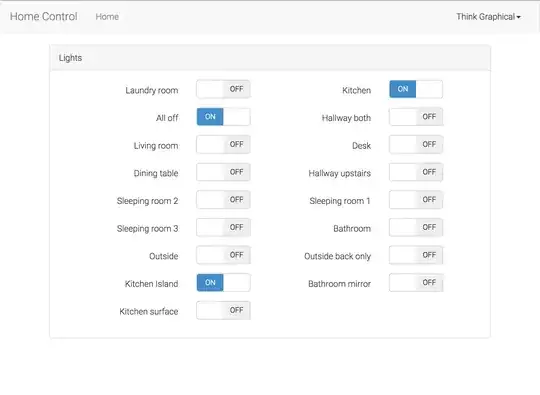Update
I was able to control Niko HC with help from @wouter.
I've installed a Android Emulator on my mac. Then with Wireshark I was able to sniff the communication.
Once you find the IP of the controller it's relatively simple:
First you need to send a TCP command: {"cmd": "startevents"}. This enables you to get feedback from the controller (to verify if the light turned on or it failed)
Then you can send a new TCP command: {"cmd": "listactions"}. This give you an overview of the available "actions" and their status (lights, actions,...)
If you want to know which rooms are available you'll need following command: {"cmd":"listlocations"} (Thanks to @Wim Deblauwe)
If you want to control an action you'll need following command:
{"cmd": "executeactions", id="{ID}", "value1" = "{VALUE}"}
People with the energy module can use following TCP command: {"cmd": "listenergy"}. This should give you an overview of the energy consumption (I don't own this module so I'm not 100% sure).
If you want info about the system, then you can use following TCP command: {"cmd": "systeminfo"}. This gives you information like language, currency, api version,...
With Laravel I've build a little API which allows me to call an simple URL to control the lights:
/api/lights/{LIGHT}/{VALUE}
This calls following function:
Route::get('/api/lights/{light}/{value}', function($light, $value){
$service_port = 8000;
$address = '192.168.0.233';
/* Create a TCP/IP socket. */
$socket = socket_create(AF_INET, SOCK_STREAM, SOL_TCP);
if ($socket === false) {
return "socket_create() failed: reason: " . socket_strerror(socket_last_error()) . "\n";
}
$result = socket_connect($socket, $address, $service_port);
if ($result === false) {
return "socket_connect() failed.\nReason: ($result) " . socket_strerror(socket_last_error($socket)) . "\n";
}
$in = json_encode(array(
'cmd' => 'executeactions',
'id' => intval($light),
'value1' => intval($value)
));
socket_write($socket, $in, strlen($in));
$message = socket_read($socket,1000000);
socket_close($socket);
return $message;
});
Then I've build a little interface to easily turn on/off the lights:

Next steps
- a custom 'presence simulation'.
- add some more 'house data' with the help of Arduino (waterlevel status, weather station, ...)
- ...
Again, thanks @wouter for the provided information!
